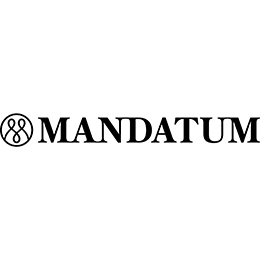April 2023
Employees consider reward schemes much more motivating than employers realize
At the start of 2022, Mandatum commissioned a reward survey aimed at identifying both what kinds of reward models companies use and how motivating and effective the personnel and management consider these models to be.
One of the survey’s key findings was the respondents’ willingness to take more risks in the hope of increasing their total earnings.
Up to 37% of the respondents reported that they would choose a lower base salary if they could earn higher performance bonuses and thus increase their total earnings.
What this tells us is that employees believe in fair compensation for going above and beyond. Those ready to accept a lower base salary in the hope of higher performance bonuses were found in all groups and include especially often men (45%), under 25-year-olds (56%) and respondents with an annual income of EUR 80,000–99,000 (55%).
Rewarding as a source of motivation
The respondents highlighted the significance of motivation in the reasoning behind their answers; many would be ready to go the extra mile if they could have a more direct impact on their earnings through their own performance.
Money continues to be the most popular incentive for employees, with monetary rewards being the top answer (33%) to the question “What motivates you to do your job well?”
Variable remuneration, including performance bonuses, is particularly motivating, as 94% of salaried employees entitled to variable remuneration considered it extremely motivating.
An interesting finding of the survey was that employees considered reward schemes considerably more motivating than employers thought they did.
Up to 64% of employees considered supplementary pension schemes to be motivating, while only 30% of employers considered solutions like these motivating from the employees’ point of view. Similarly, 46% of employees considered insurance benefits motivating compared to 30% of employers.
How do the reward solutions used by Finnish companies supplement statutory social security cover?
Finland is known internationally for its comprehensive social security and pension cover. Despite this, the reward models of many Finnish companies are based on supplementing this statutory safety net in addition to the base salary. Why?
Pension cover in Finland
In terms of pension cover, the Finnish pension system is built upon three main pillars:
- Statutory pension cover, which in Finland consists of national and earnings-related pension systems;
- Employer-specific pension arrangements, such as Mandatum’s Sesam group pension insurance; and
- Voluntary private pension contributions either through a pension insurance scheme or a long-term savings plan.
All employees and employers in Finland are entitled to pension cover under the first pillar, the statutory pension cover.
The amount of pension depends on annual earnings and the number of years worked. Statutory pension is paid to those aged 65 and above born between 1962 and 1964. For employees born in 1965 and thereafter, the old-age pension is determined according to the old-age pension age laid down for their age cohort in the Employees Pensions Act (Työntekijän eläkelaki, 2006/395).
The amount of statutory pension depends on annual earnings, year of birth and age at retirement. For example, an employee born in 1996 with a monthly salary of EUR 3,200 would receive a monthly pension of about EUR 1,900 upon retirement, assuming that they retire at the age of 68.
On the other hand, an employee born in 1980 earning EUR 4,000 a month would be entitled to EUR 2,300 of monthly pension if they retired at the age of 66.
Due to this, many employers now offer group pension solutions, such as Mandatum’s Sesam group pension insurance, which allow employees to accrue additional pension alongside the statutory pension through the company’s group pension scheme.
In Finland, group insurance solutions are becoming an increasingly common incentive thanks to their flexibility; employees entitled to group insurance can, for instance, choose their investment strategy themselves for the pension assets they have accumulated through the group insurance.
In addition, employees may withdraw money from their group pension assets when they turn 60, which is before the statutory pension. The exact lowest retirement age is agreed on a case-by-case basis.
In the Mandatum Sesam pension model, performance bonuses earned by employees can be paid into their group pension insurance.
The tax benefits of voluntary pension insurance can be described as follows: if a company wants to directly reward an employee with a sum of EUR 10,000, the company must first pay any employer contributions, such as pension insurance, accident and life insurance, unemployment insurance and health insurance contributions from the sum.
After this, the employee must pay personal income tax, for example 30%, from the sum. After all the taxes have been paid, the employee only gets EUR 7,000. When paying into pension insurance, the company and the employee do not need to pay these extra costs, resulting in a win-win for all.
When an employee eventually withdraws money from the pension insurance set up by their employer, the employee must pay personal income tax, which also applies to the statutory pension.
Disability cover and life insurance
Despite Finland’s high-quality health care system, a serious illness has the potential to turn anyone’s life upside down. If an employee is forced to stop working due to an illness, their family’s financial situation may quickly become precarious in the absence of one of the two sources of income.
Worse still, in the event of an unexpected death of an employee, the family will not only mourn the loss but also worry about their finances. Unexpected costs often arise when someone passes away, which many don’t even want to think about in advance, even though it might be beneficial.
As a solution to this, many Finnish companies offer additional cover to their employees in the event of death or losing the ability to work. Like different pension solutions, offering personal risk insurance cover is becoming an increasingly popular incentive in Finland.
In practice, disability cover means that the employer pays a daily allowance to an employee who has fallen ill if the employee is temporarily absent from work due to disability. In the case of permanent disability, the employer pays them a lump sum equivalent to the employee’s earnings for a year or two. These benefits are paid on top of the statutory benefits and compensations the employee is entitled to.
Personnel fund
A personnel fund is a fund owned and managed by a company’s employees. Personnel funds can be used as a valuable employee benefit and incentive as a part of the company’s reward scheme. Personnel funds can be established by a joint decision of the employees and the management. Having a personnel fund means that performance bonuses paid by the company to the employees are directed to the personnel fund.
A personnel fund is cost neutral to the company if it is established based on a so-called ‘voluntary model’, in which the employees may choose to pay their performance bonuses into the fund or to take them out in cash.
Cash vs. saving into pension insurance
Below is an example using a bonus of €10,000.
€7,000
in cash
Bonus paid in cash
Tax spend = €3,000 (30%)
Company's indirect cost = €2,500
€12,500
invested in the future
Bonus paid into pension insurance
€2,500 profit (the insurance premium does not accrue TyEL pension or other social security benefits).
From the employees’ perspective, a personnel fund makes rewarding more flexible, as each employee can decide for themselves if they want to take out their performance bonus in cash or to pay the bonus into the fund. Employees may also choose to withdraw some of their share of the fund annually or to let the fund accumulate over a longer period of time, thus increasing the share they can withdraw.
Each year, the maximum amount that an employee may transfer into the share of the fund they can withdraw is 15% of their total fund unit. When the employee decides to withdraw shares from the personnel fund, 20% of the withdrawn sum is always tax free, while the rest is subject to personal income tax.
By using these three reward solutions, companies can make their reward schemes more efficient in a way that not only motivates the employees but also benefits the company.
Why partner with Mandatum Life Insurance Company Limited?
Learn more about the advantages of partnering with Mandatum Life Insurance Company Limited, view their key figures, recent awards and recognitions and get in touch with the local IGP contact.
Learn more

